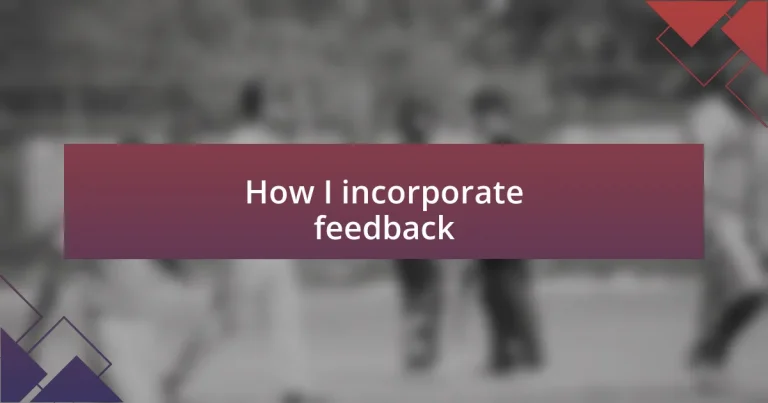Key takeaways:
- Feedback is essential for personal and professional growth, transforming criticism into opportunities for improvement.
- Diverse sources of feedback, including peers, supervisors, clients, and friends, provide a well-rounded understanding of areas for development.
- Creating a structured action plan and maintaining accountability enhances the implementation of feedback and fosters growth.
- Continuously seeking and integrating feedback leads to improved communication, stronger team relationships, and a culture of openness.
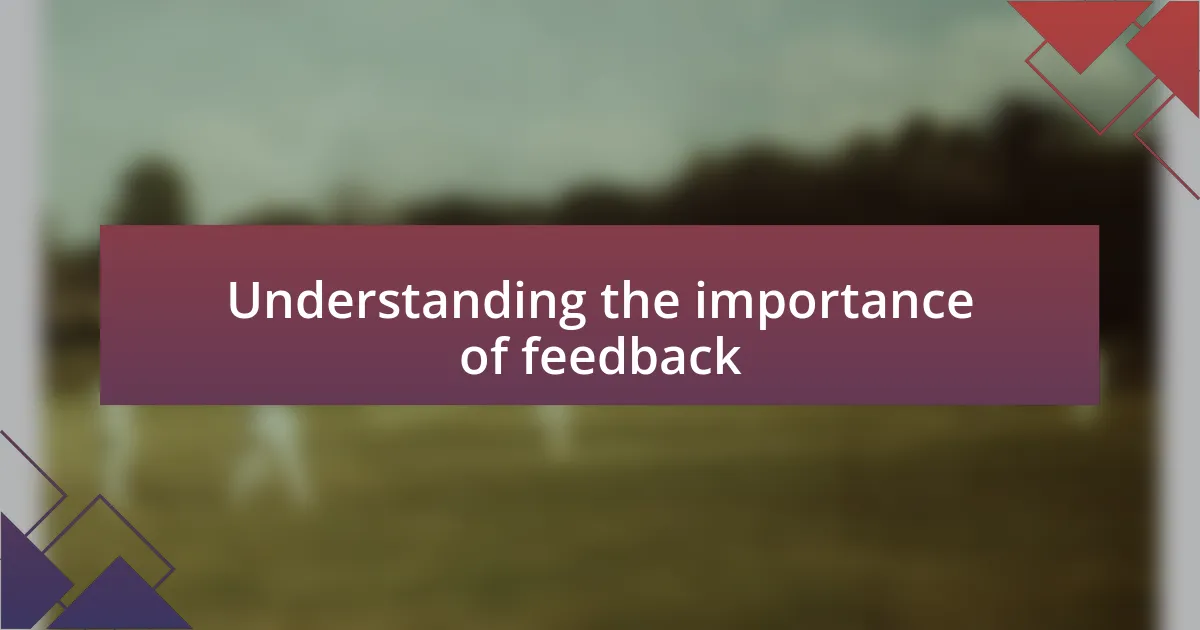
Understanding the importance of feedback
Feedback is an essential part of growth, both personally and professionally. I remember a time when I received a critique on a project I had poured my heart into. At first, it stung, but reflecting on that feedback helped me improve not just that project, but my overall skills and confidence.
When we view feedback as a tool rather than a criticism, it changes our mindset. Have you ever felt disheartened after receiving feedback? I certainly have. However, I learned to see it as a mirror reflecting my strengths and areas for improvement. This shift in perception has been transformative for me, as it fosters a cycle of continuous learning.
Listening to feedback opens up a dialogue, creating opportunities for connection and collaboration. I often ask colleagues for their insights, knowing that their perspectives can highlight blind spots I may not see. This practice reminds me that no one is an island; we often need others’ inputs to reach our fullest potential.
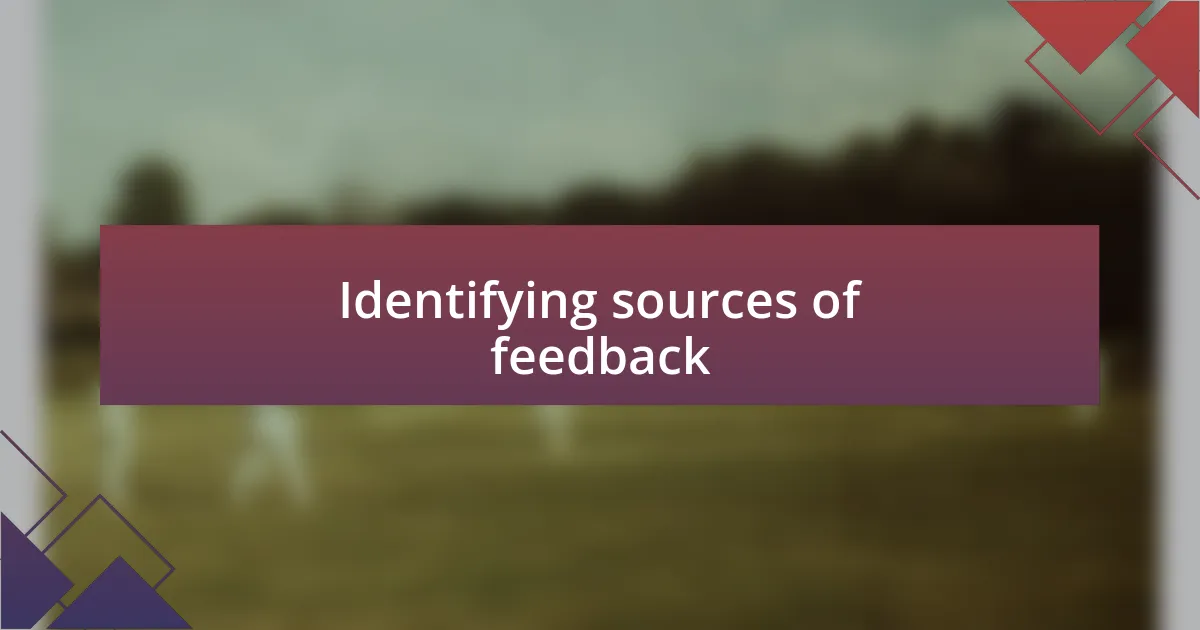
Identifying sources of feedback
Identifying sources of feedback can significantly enhance our growth journey. Personally, I’ve found that my most valuable feedback often comes unexpectedly. For example, during a casual conversation with a friend, I learned how my communication style affected our collaboration. This taught me that sometimes the best feedback comes from informal settings where people feel safe expressing their thoughts.
I also make it a point to seek feedback from various sources. Formal evaluations from supervisors or structured reviews provide critical insights, but peer feedback has its own value. I recall a time when a colleague provided constructive criticism on my presentation skills during a team meeting. It wasn’t easy to hear, but it led me to enroll in a workshop that uplifted my confidence and effectiveness. Recognizing these diverse sources aids in creating a well-rounded picture of where I stand.
To really tap into feedback, I’ve learned to ask specific questions. For instance, when I present ideas, I often ask for input on clarity and engagement. It’s eye-opening how targeted questions can lead to more precise feedback. This proactive approach has transformed my work processes and enriched my interactions with others.
| Source of Feedback | Description |
|---|---|
| Colleagues | Insights from peers can highlight practical aspects of your work style and how it affects teamwork. |
| Supervisors | Formal evaluations often provide structured feedback, focusing on performance metrics. |
| Clients | Client feedback offers a unique perspective that informs product or service quality directly. |
| Friends | Informal settings often yield candid insights, as friends may feel more comfortable sharing their thoughts. |
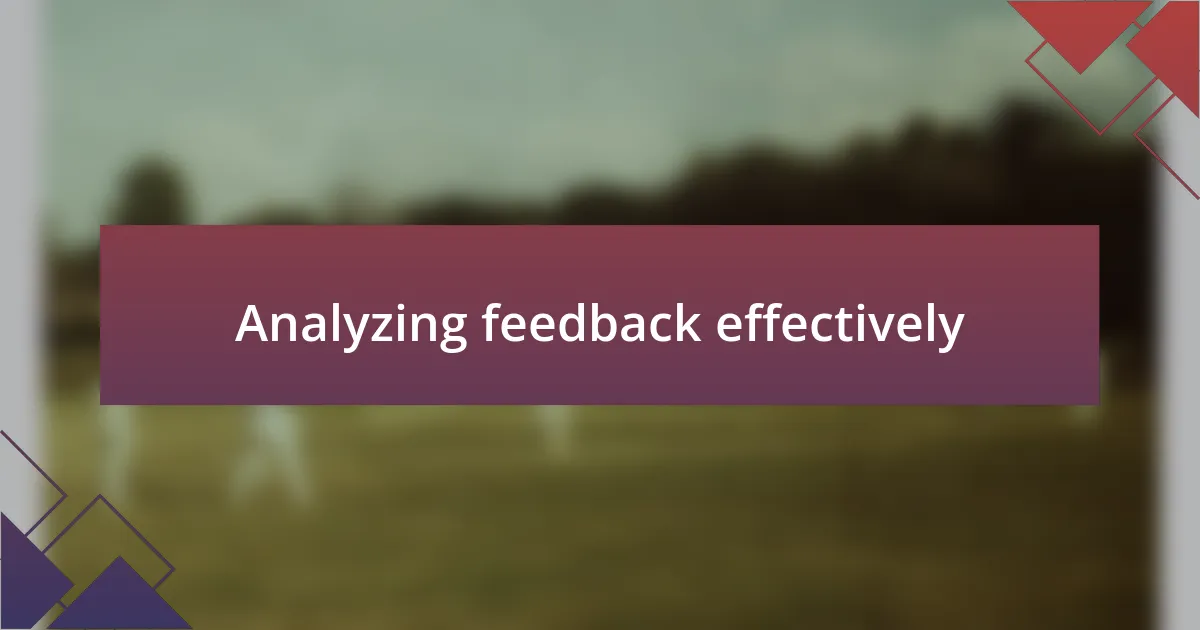
Analyzing feedback effectively
Analyzing feedback effectively requires a focused and open-minded approach. I’ve often found that initial reactions to feedback can cloud judgment. For instance, I remember receiving feedback on a project where my first instinct was to defend my choices. However, stepping back allowed me to see the value in the perspective shared. It’s crucial to approach feedback as an opportunity for growth rather than a personal critique.
When I analyze feedback, I find it helpful to break it down into manageable components. Here’s a process I typically follow:
-
Listen Actively: Fully absorb what’s being said without interrupting. This helps in understanding the core message.
-
Identify Key Themes: Look for common threads or recurring points. This can highlight areas that need attention.
-
Evaluate Emotional Impact: Consider how the feedback resonates emotionally. If it strikes a chord, there might be a deeper underlying issue to address.
-
Seek Clarification: If something is unclear, asking questions can provide deeper insights.
-
Reflect and Plan: After sorting through the feedback, I take time to reflect and create a plan on how to implement necessary changes.
Using this structured approach not only demystifies the feedback but also empowers me to take actionable steps toward improvement.
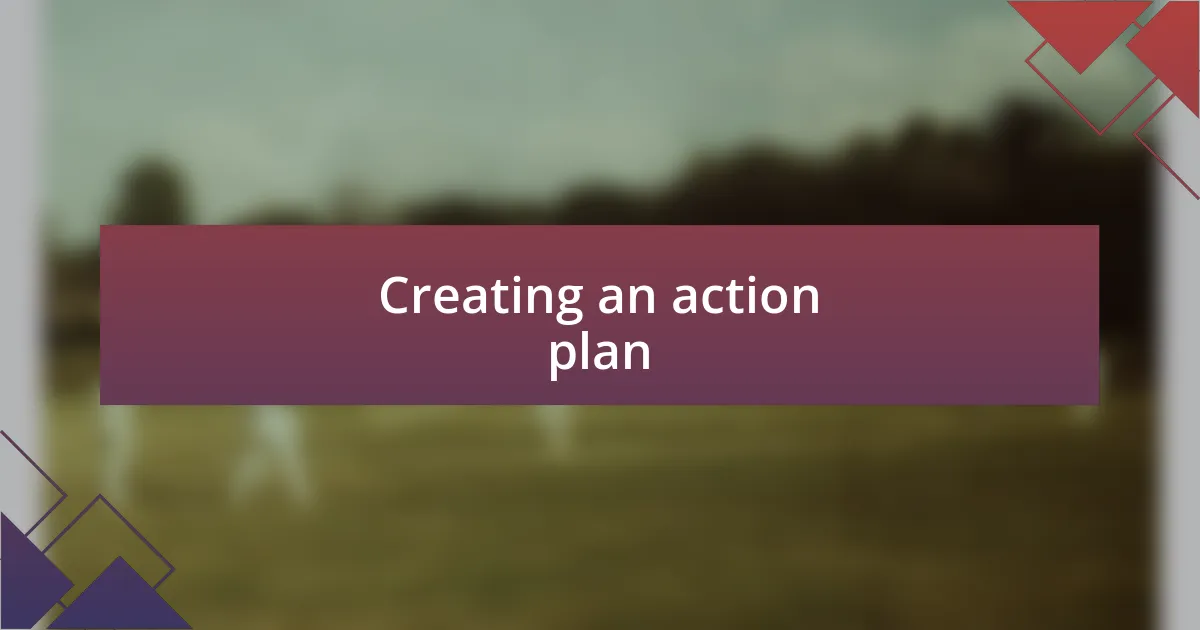
Creating an action plan
Creating an action plan involves translating feedback into concrete steps. I remember a time when I received constructive criticism on my time management skills. Instead of merely acknowledging the feedback, I set clear objectives: prioritizing tasks and using time-tracking tools. This transformation turned vague advice into specific, actionable changes that improved my daily workflow.
To be effective, I ensure my action plan includes both short-term and long-term goals. For instance, after receiving feedback on a presentation style, I dedicated time each week to practice in front of a mirror or record myself. This not only helped me refine my delivery but also made me more comfortable with public speaking. Have you ever tried experimenting with your delivery? I found that stepping out of my comfort zone to practice made the next presentation feel much more manageable.
Additionally, I believe accountability is key to following through with my action plan. After outlining my goals, I often reach out to a colleague for regular check-ins. Having someone else aware of my objectives creates a sense of responsibility that helps me stay committed. It’s fascinating how a little external motivation can spur genuine growth and transformation. How do you keep yourself motivated when working on feedback? I’ve learned that collaboration often leads to greater insights and progress.
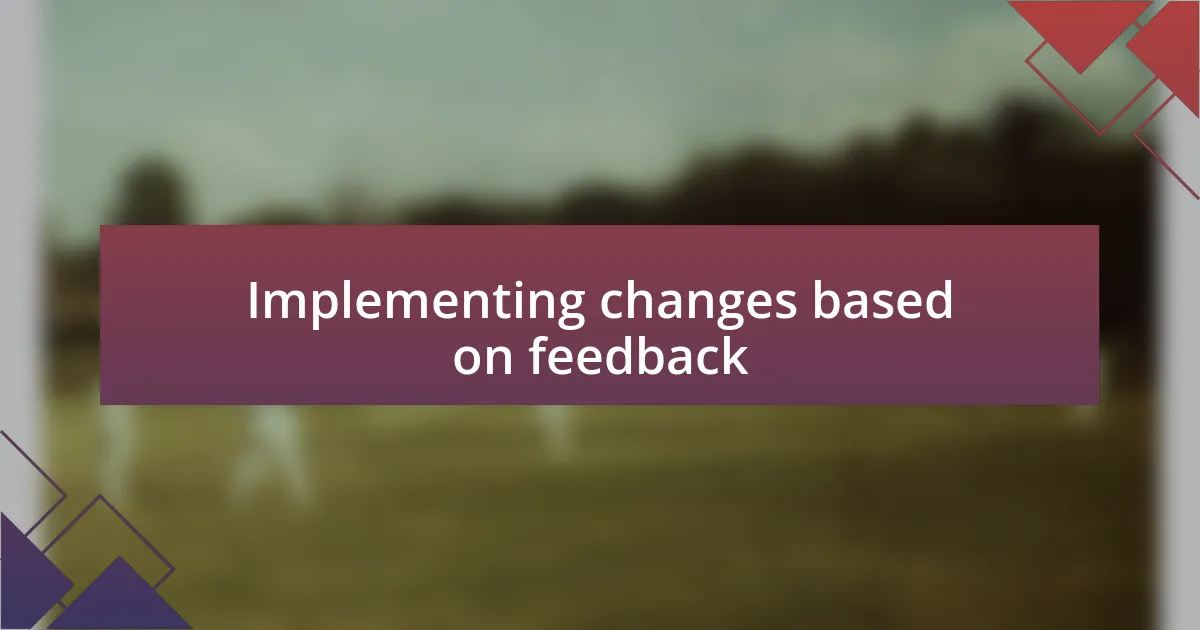
Implementing changes based on feedback
When I think about implementing changes based on feedback, I recall a particular instance with a team project. After my colleagues pointed out that my input was often too focused on details, I made a conscious effort to step back and view the bigger picture. This change not only enhanced my contributions but also fostered a more collaborative environment within the team. Have you ever found yourself too deep in the weeds? It’s amazing how shifting your perspective can lead to more impactful results.
Another significant change I made came after receiving critical feedback about my written communication. I decided to reduce jargon and simplify my language, making my messages clearer. One day, after sharing a revised report, a colleague told me that they finally understood my ideas without needing clarification. This small shift in my writing style dramatically improved how my thoughts were perceived. Have you noticed how clarity can transform a message?
Moreover, I find it essential to revisit feedback after implementing changes. One time, after adjusting my leadership approach following feedback, I asked my team for their thoughts a few weeks later. The resulting discussion revealed both my growth and areas where I could still improve. This ongoing dialogue is invaluable; it reminds me that feedback is a continuous process, not just a one-time event. How do you gather insights after making changes? Engaging in these conversations is crucial to refining our efforts.
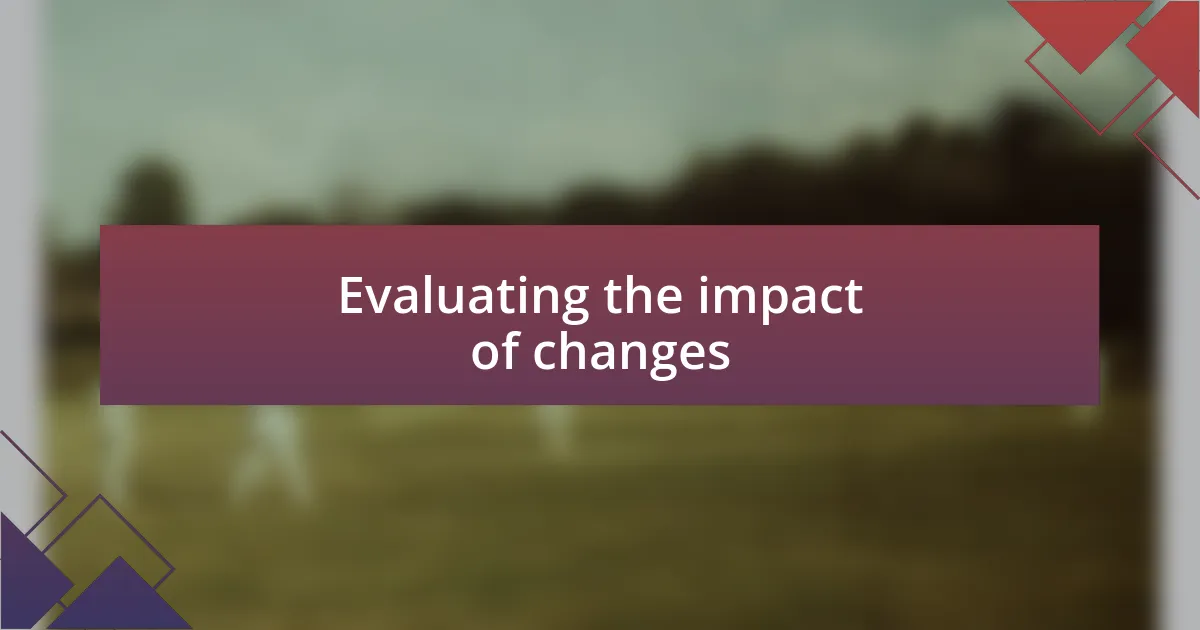
Evaluating the impact of changes
Evaluating the impact of changes is like tuning an instrument; it requires careful listening and observation. After adjusting my communication style, I was eager to see how my colleagues would respond. Their positive reactions and increased engagement made it clear that my efforts had resonated, reinforcing the importance of reassessing the effectiveness of my methods.
Sometimes, the results of changes aren’t immediately evident. I remember a time when I altered my approach to team meetings after receiving feedback that they were too long and unfocused. A few weeks later, during a casual conversation with a teammate, I learned that the shorter, more structured meetings had resulted in quicker decision-making. This affirmation helped me recognize that even subtle changes can lead to significant improvements.
It’s essential to seek out evidence of improvement rather than waiting for it to surface. I often employ quick feedback surveys after implementing changes to gauge emotions and reactions firsthand. These surveys not only provide data but also create an open channel for ongoing dialogue. How do you ensure that you’re truly connecting with your audience? For me, actively pursuing this feedback has been transformative, allowing me to refine my approach continually.
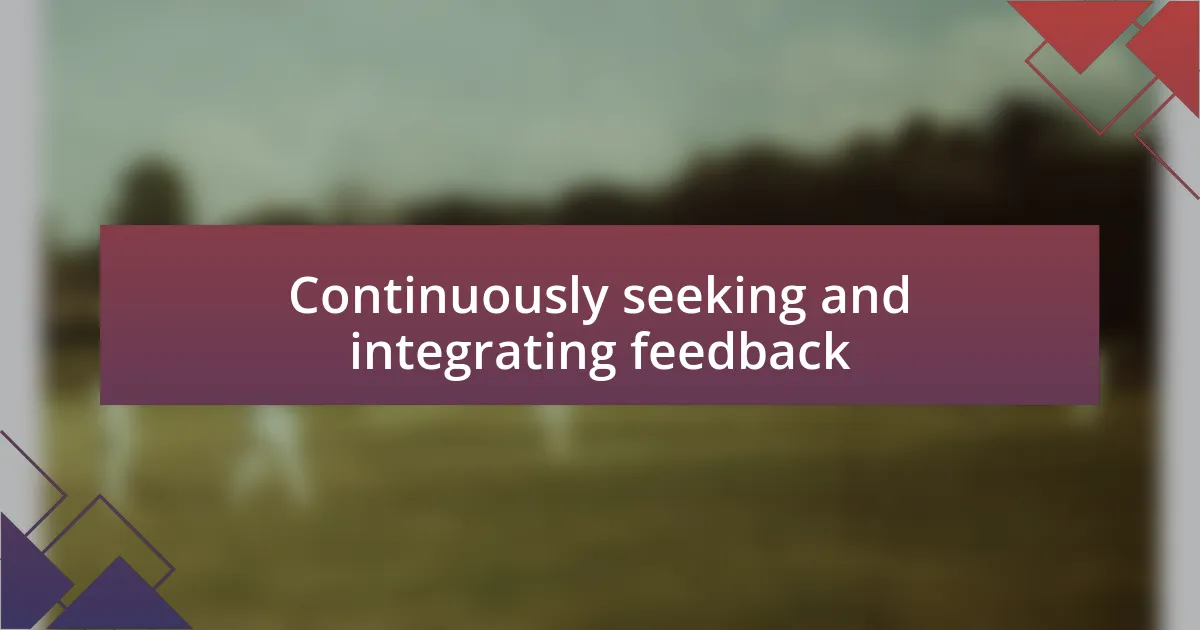
Continuously seeking and integrating feedback
Continuously seeking feedback has become a fundamental part of my personal and professional growth. I recall a project where I actively invited my team to share their thoughts throughout the process instead of just at the end. Their insights were invaluable, highlighting areas I hadn’t considered, and ultimately led to a product that was more aligned with our user’s needs.
Integrating feedback doesn’t stop at gathering it; it involves reflecting on what it means. One time, after a presentation, I received constructive criticism about my pacing. Initially, it stung, but then I realized it was an opportunity for improvement. Using that feedback, I practiced with a timer, and the next time I presented, the responses were much more positive. Have you ever had a moment where feedback transformed your approach? For me, each of those moments deepens my understanding of effective communication.
I also find that proactively asking for feedback not only enhances my work but also fosters stronger relationships within my team. I often check in with individuals after a project wraps up, asking, “What part of my contribution did you find most helpful?” This question typically leads to enlightening discussions, revealing blind spots I may have overlooked, and solidifying trust in our collaboration. It’s amazing how taking the initiative to seek out perspectives can create a culture of openness and improvement.
